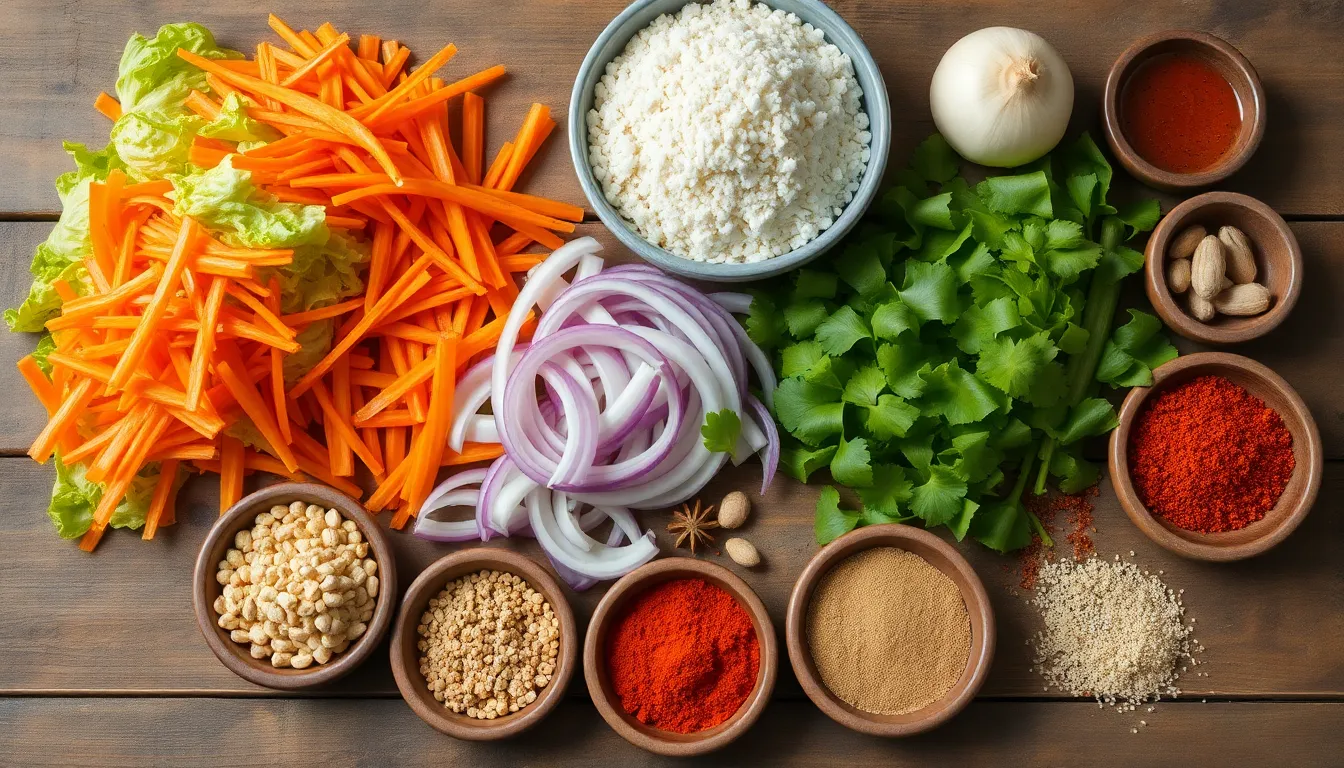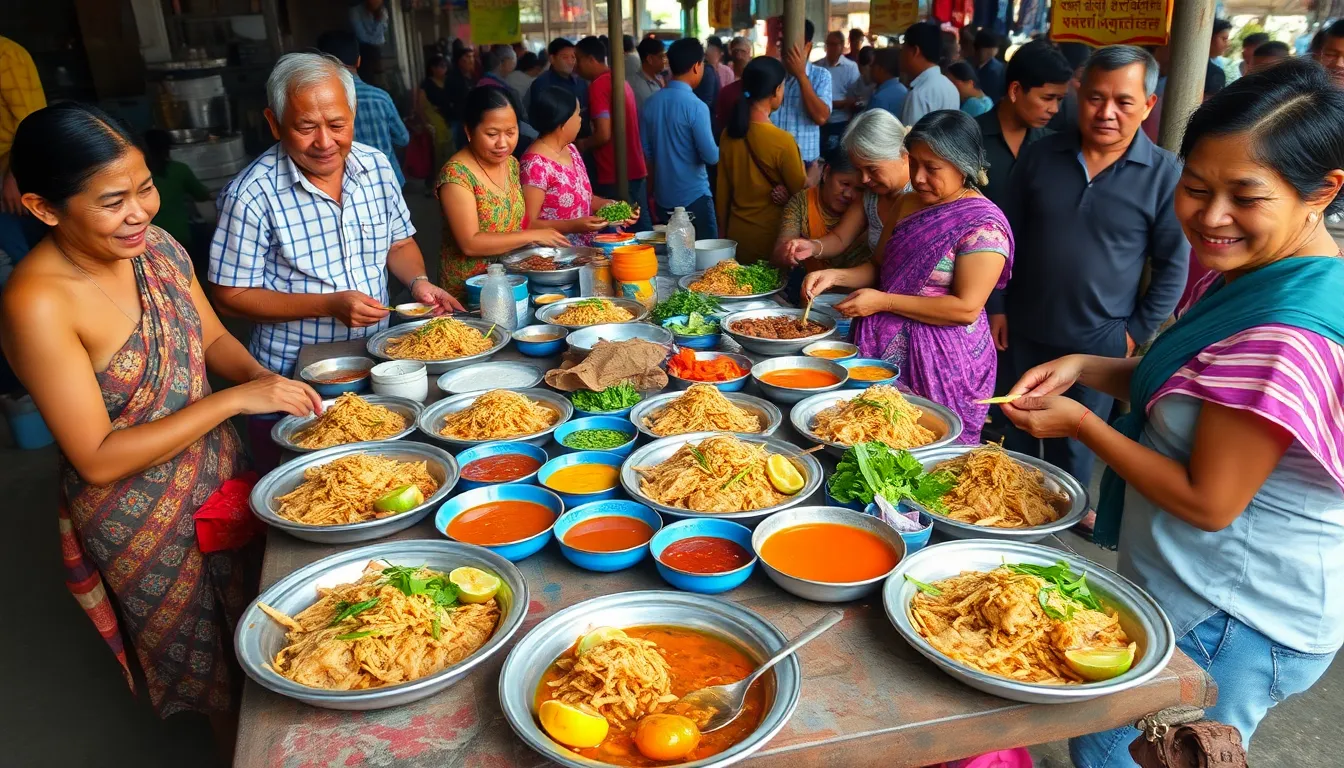In the bustling streets of Myanmar, food lovers embark on a culinary adventure that’s as vibrant as the country itself. Among the tantalizing dishes that beckon, hingagyi stands out like a superstar at a talent show. This delightful treat, with its unique blend of flavors and textures, isn’t just a meal; it’s an experience that dances on the taste buds and leaves a lasting impression.
Table of Contents
ToggleOverview of Hingagyi
Hingagyi represents a beloved dish in Myanmar’s diverse culinary landscape. This specialty, commonly found in street markets and local eateries, showcases unique flavors and textures. Primarily, hingagyi consists of a rice flour base, often combined with various fillings. Popular fillings include shredded vegetables, ground nuts, and sometimes even meats.
Chefs prepare hingagyi using specific techniques that retain the integrity of its ingredients. They steam or fry the dish to enhance its flavor, creating a delightful contrast between the crispy exterior and the soft interior. Served as a snack or appetizer, hingagyi encourages sharing among friends and family.
The vibrant colors of the ingredients not only appeal to the taste buds but also captivate the eyes. This dish occasionally features accompanying sauces that add an extra layer of taste. Frequent diners may describe hingagyi as a perfect blend of savory and slightly sweet, making it suitable for various palates.
Visitors exploring Myanmar often seek out this delicacy. Sampling hingagyi connects them to local culture through food. By engaging with this dish, one experiences a taste of Myanmar’s culinary heritage, showcasing the country’s rich traditions and diverse agricultural resources. Ultimately, hingagyi stands as more than just a meal; it embodies the warmth and creativity of Myanmar’s food scene.
Ingredients Used in Hingagyi

Hingagyi features an array of ingredients that contribute to its distinct flavor profile and texture.
Main Components
Rice flour forms the base of hingagyi, providing a flexible and soft texture. Shredded vegetables like cabbage, carrots, and onions add freshness and crunch. Ground peanuts bring a nutty flavor and enhance the richness of the dish. Some variations incorporate proteins such as pork or shrimp, offering additional depth to the overall taste. This combination of ingredients makes hingagyi a balanced dish filled with nutrients.
Optional Additions
Spices and seasonings elevate the taste of hingagyi. Garlic and ginger often infuse the mixture with aromatic depth. Chopped herbs like cilantro and green onions provide a burst of freshness. Accompanying sauces, such as chili sauce, enhance heat and flavor. Some enjoy adding pickled vegetables for a tangy contrast. These optional elements let cooks adjust the dish according to personal preferences, creating endless variations.
Preparation Methods
Preparation methods for hingagyi highlight traditional techniques alongside modern adaptations. Each approach offers unique flavors and textures, showcasing the dish’s versatility.
Traditional Cooking Techniques
Traditional cooking methods focus on enhancing the flavors while keeping the dish authentic. Steaming serves as a primary technique, allowing the rice flour base to cook evenly and maintain moisture. Frying also plays a significant role, creating a crispy exterior that contrasts with the soft interior. Street vendors often use open flames to achieve that perfect char, infusing smokiness. Freshly shredded vegetables combine harmoniously during preparation, ensuring crunchiness in every bite. Aromatic ingredients like garlic and ginger infuse their essence into the mix, enriching the dish further.
Modern Variations
Modern variations of hingagyi often experiment with different ingredients and techniques. Chefs may incorporate quinoa or chickpea flour as alternatives to rice flour, catering to diverse dietary preferences. Some add exotic vegetables to the filling, like bell peppers or zucchini, offering new flavors. Baking has emerged as a popular method, providing a healthier option while retaining texture. Fusion adaptations include ingredients such as kimchi or cheese, blending Myanmar’s culinary heritage with global influences. Sauces also vary, with options like soy sauce or spicy mayo elevating the flavor profile.
Cultural Significance of Hingagyi
Hingagyi holds a special place in Myanmar’s culture, deeply woven into the fabric of social gatherings and celebrations.
Festive Occasions
During festivals and holidays, people often prepare hingagyi as a symbol of hospitality. This dish frequently appears during traditional celebrations like Thingyan, the Water Festival, and Thadingyut, the Festival of Lights. Friends and family gather to enjoy this vibrant treat, sharing stories and laughter while savoring its diverse flavors. Festivals emphasize community bonding, and hingagyi brings everyone together around food. Often, variations emerge during these occasions, showcasing local ingredients and culinary creativity.
Daily Life in Myanmar
In daily life, hingagyi serves as a convenient snack enjoyed by individuals of all ages. Street vendors sell it at bustling markets, making it easily accessible for busy residents. Many people consume hingagyi for breakfast or as an afternoon treat. The dish not only satisfies hunger but also represents comfort and familiarity in local communities. Children often prefer the tasty fillings while adults appreciate the dish’s nutritional value. Thus, hingagyi plays a vital role in everyday routines, highlighting its importance in Myanmar’s culinary landscape.
Hingagyi stands out as a culinary gem in Myanmar’s vibrant food culture. Its unique combination of flavors and textures makes it a must-try for anyone exploring local cuisine. As a beloved snack or appetizer, hingagyi not only satisfies hunger but also fosters connections among friends and family.
The dish’s versatility allows for endless variations, showcasing the creativity of chefs and home cooks alike. Whether enjoyed at a street market or during festive gatherings, hingagyi embodies the warmth and hospitality of Myanmar. For those seeking an authentic taste of the country’s rich culinary heritage, hingagyi offers an unforgettable experience that resonates with both locals and visitors.





